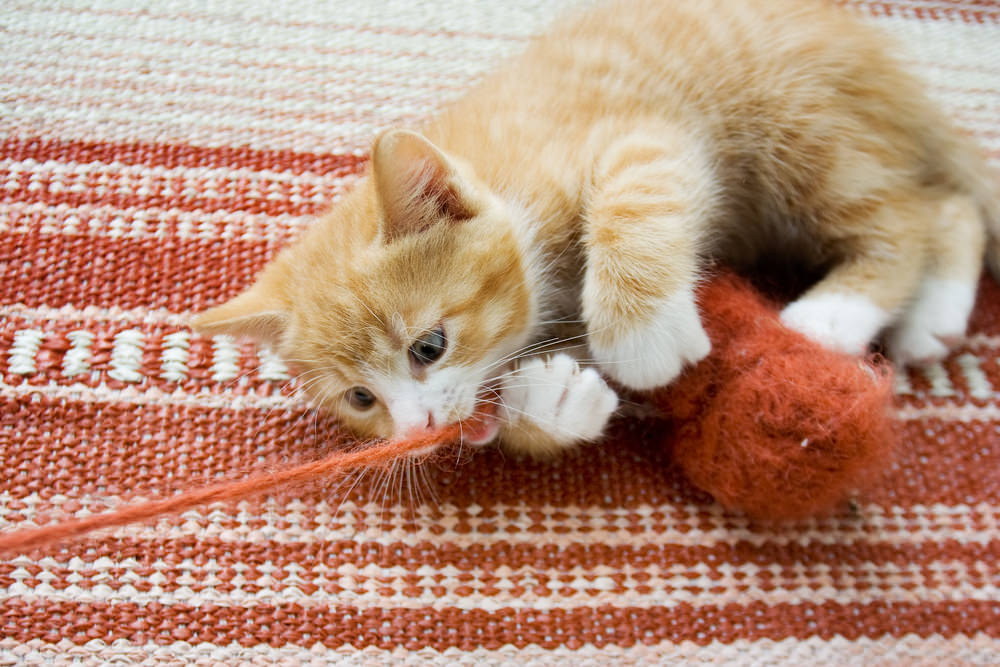
Choking is one of the most common reasons our cats are taken to the emergency veterinary clinic. We try our best to keep our pets safe, but even under a watchful eye they can get into trouble. Knowing how to handle that trouble can become a life saving event. Cats are constantly getting into items that they can and do choke on. A choking cat is an emergency situation and you may not have time to get to the vet soon enough to save your precious friend. Therefore, it’s very important to understand how to safely treat a choking cat to make sure that he’s alive and as well as can be for his follow up visit with the veterinarian.
What to Do First
- Know the Signs – Pets, just like humans, that can’t breath will start panicking. If you happen to see your cat frantically pawing at its mouth or under severe distress, check to see if he’s choking. If you’re later on the scene and you find your cat unresponsive or unconscious, check his throat to make sure there is nothing lodged in the airway. The most common items cats choke on are round toys like pom poms, bells and balls. If your cat gets into trash, splintered pieces of bone or other hard items can get lodged in the throat as well.
- Safety First – This is as important for you as your cat. Even the most docile animals will panic and become violent when they are suffocating and/or fearing for their lives. Make sure to restrain the cat as safely as possible. This is easier when you are not alone, but it can be done. When opening the cat’s mouth, try to press the lips against the teeth to protect your fingers to prevent him from accidentally biting you.
- Check the Airways – If you’re lucky, you may be able to remove the item by yourself. Objects that are stuck in the throat can be dislodged with a flat spoon handle if you cannot pry it free with your hands. Remember to try not to use any sharp objects to remove the item as this can cause further damage.
Steps for Heimlich Maneuver
If your pet has become unconscious or you found your pet unconscious on arrival, and there is no noticeable object in the airway, you will need to perform a Heimlich maneuver. Follow the steps below:
- Lay the cat on it’s side with one hand along its back and the other on its belly, just under the ribcage.
- Using the hand on the belly, give several sharp pushes in and up.
- Check to see if any objects have become loose in the mouth and remove them if they have.
- Close the mouth and give several hard breaths through the nose before opening the mouth again.
- If no object has been dislodged and your cat is not breathing, or the object has been removed and your cat is still not breathing, check for a heartbeat and/or pulse.
- If none can be found, begin CPR and take your cat immediately to the veterinarian.
Afterwards
Always seek medical care for a cat that was or is choking, even if you were successfully able to dislodge the item and your pet seems relatively normal. It is very important to make sure that the throat and abdomen have not been damaged by any foreign objects or by any thrusting during the Heimlich maneuver. If the object is removed and your pet is still unconscious and/or not breathing, you may need to perform CPR.
We hope that you’ll never need to know this information, but it’s always better to have it stored in case you do. You never know when an emergency is going to happen and even situations we think are benign can turn catastrophic. For instance, it’s important to make sure that small objects are out of your cat’s reach at all times and they are never left unsupervised with toys that can fit in their mouths or break into pieces. Little things can be done to improve your cat’s safety, but there are still times when your kitty might get into trouble. With these simple steps and the help of your veterinarian, your cat will hopefully receive all of the care needed to continue a healthy life.
